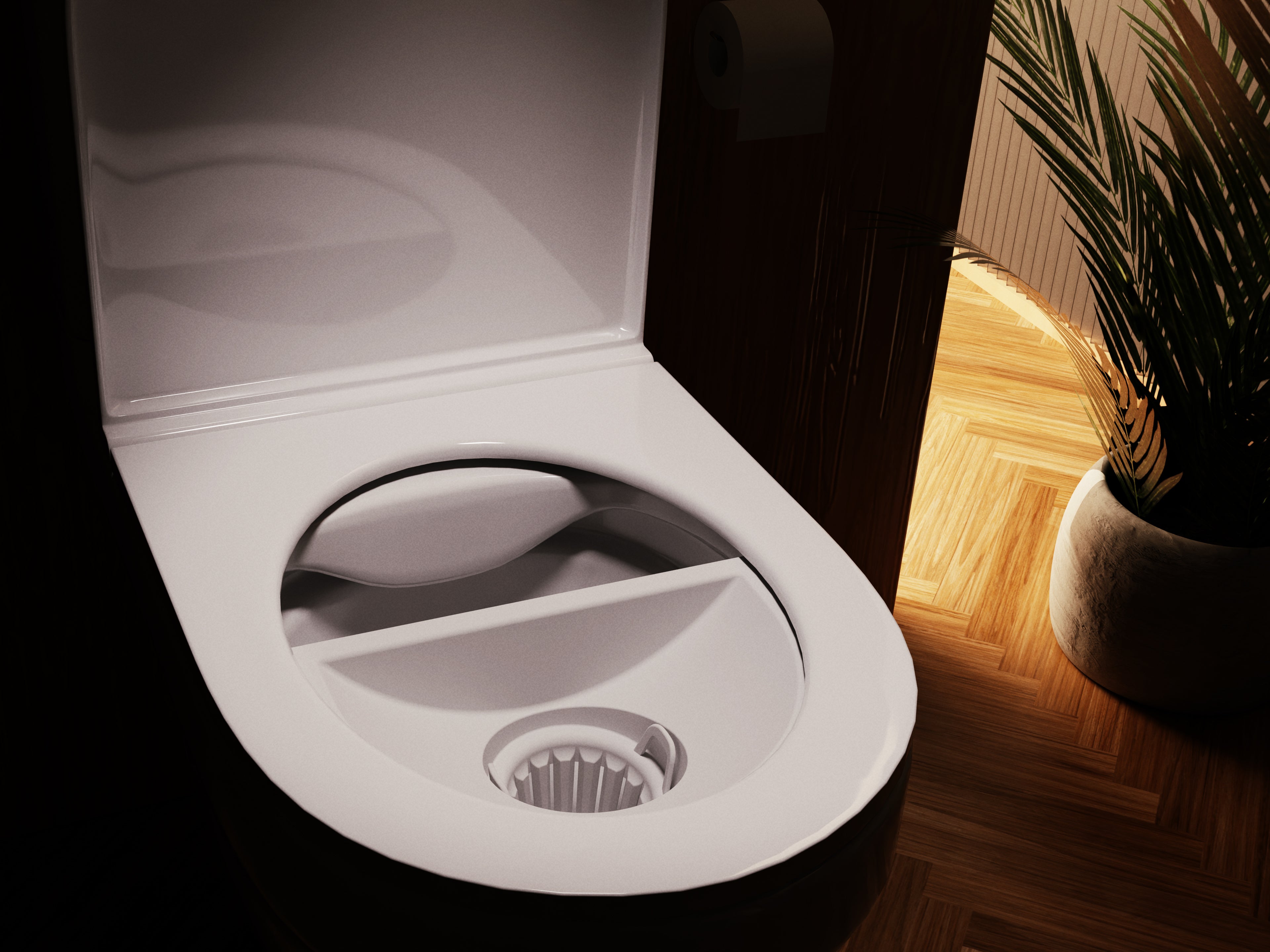Meet the Collection Cradle
Every element has been designed with input from healthcare professionals and families who have experienced pregnancy loss, ensuring our solution meets real needs with genuine compassion.
A Complete Solution for Pregnancy Loss
The Miscarriage Collection Cradle represents a breakthrough in compassionate care during pregnancy loss. Our innovative design addresses the practical and emotional challenges faced by families during this difficult experience.
Dignified Handling Without Direct Contact
Our removable Sieve eliminates the need for manual handling entirely. Healthcare professionals or family members can simply lift the Sieve by its handles and transfer contents directly to the included opaque Storage Container. This design preserves dignity while enabling proper medical examination when needed.
Secure and Hygienic Collection
The Cradle sits securely in any standard toilet and features a specially designed gap at the back to prevent contamination. The advanced filtration system includes elongated filter holes that effectively separate viscous liquids while collecting precious remains safely and hygienically.

Fits Under Toilet Seat
The original design positioned the Collection Cradle on top of the toilet seat. However, due to variations in toilet sizes and, more importantly, the risk of slippage and losing the contents, which would be devastating, the design was adapted to sit inside the toilet bowl, beneath the seat.
This revised positioning allows the device to be secured in place by the weight of the person sitting down, along with additional support brackets at the front and sides. These features ensure the device remains as secure as possible during use to safely collect the baby. It also allows the woman to use the toilet as normal, providing both practicality and dignity during use.

Gap To Eliminate Faecal Contamination
During a hospital stay, patients experiencing miscarriage are often provided with a cardboard bowl that sits over the entire toilet bowl, collecting everything. When medication is used to assist the process, cramping can cause the bowels to open, meaning blood, urine, faeces, tissue — and the baby — all end up mixed together in the same bowl. It’s an experience that can be deeply distressing and difficult to forget.
The Miscarriage Collection Cradle was designed to reduce this as much as possible. Its semicircular shape leaves a gap at the back, allowing faecal matter to pass directly into the toilet. The rear edge is thick enough to be easily located by touch, helping the user position themselves comfortably so the cradle can filter and collect what is needed while keeping other waste separate.

Removable Sieve
One of the most distressing aspects of using a kitchen sieve and container during miscarriage is being forced to look closely at everything that is passed, even when the individual does not wish to. Searching through blood, urine, faeces, and clots in an attempt to identify the baby can be deeply traumatic, particularly for someone without medical training or understanding of what to look for.
When something that might be the baby is found, it often has to be handled directly or transferred by pouring the contents of the Sieve into a container. This process is not only distressing but also undignified, an experience no one should ever have to endure.
The Sieve is fully removable, allowing the patient to collect everything and place it directly into the Storage Container without needing to look or handle any of the contents. This design minimises exposure, reduces distress, and removes the need for the patient to physically interact with the contents. They are not forced into a situation they may not be emotionally prepared for. Instead, it offers choice and gives the patient a moment to pause and decide what feels right for them.





